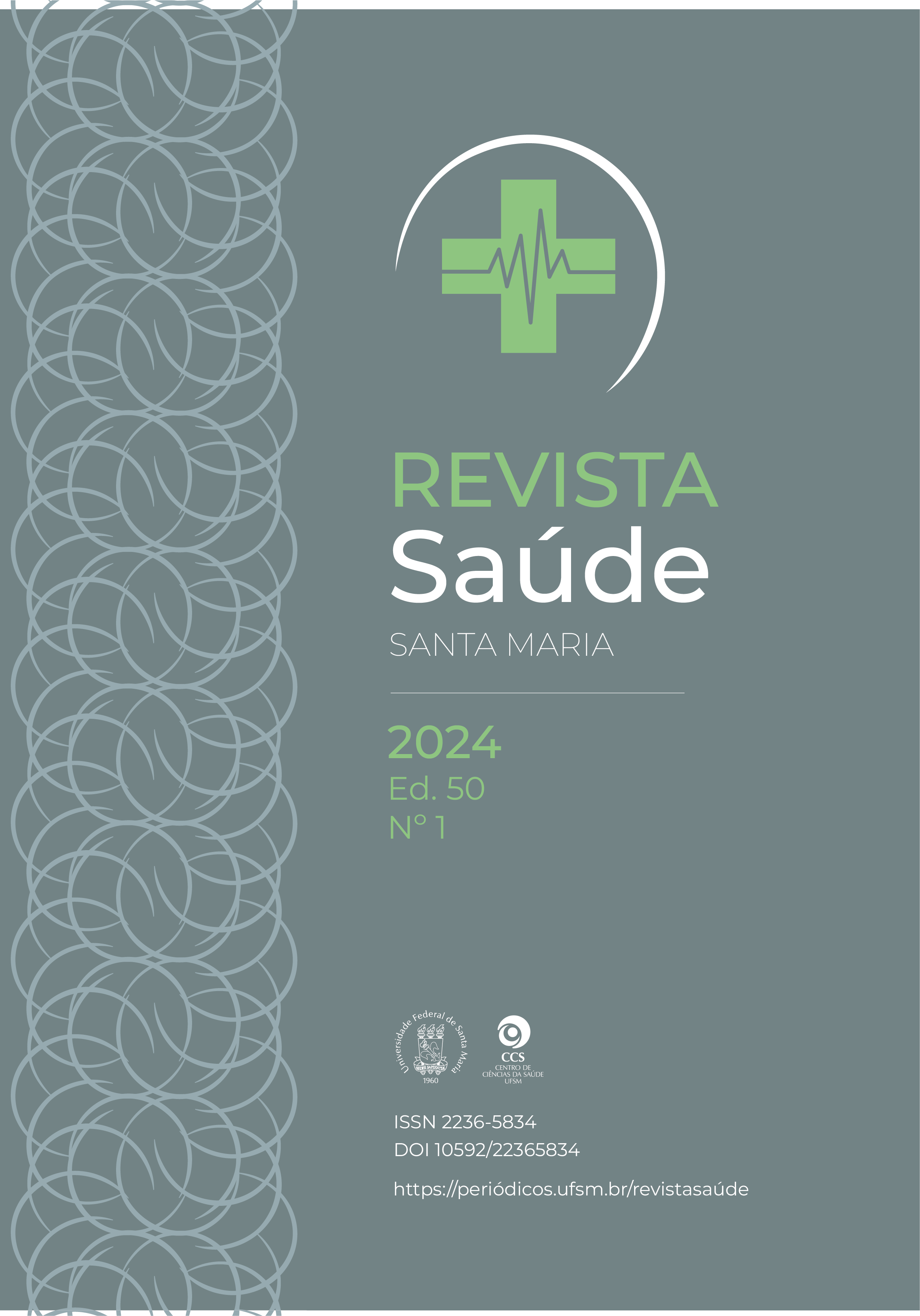Analysis of the evolution of infant mortality rates of children residing in the state of rio grande do sul, brazil
DOI:
https://doi.org/10.5902/2236583469170Keywords:
Infant mortality, Child mortality, ARIMA, βARMA, ForecastingAbstract
Objective: This study aims to highlight the main characteristics and compare the evolution of infant mortality rates in the state of Rio Grande do Sul (RS) through the ARIMA and ARMA methodologies. Method The monthly infant mortality rates of the period of 2000 to 2017 were obtained from the Unified Health System (SUS) Department of Informatics (DATASUS). A descriptive analysis and time series modelling using the ARIMA and ARMA methodologies were carried out and discussed. Results: Cacique Doble, Alto Alegre, and São Valério do Sul were the cities of residence with the highest infant mortality rates for the state of RS in the period. Based on the residual analysis and the AIC and BIC penalizing criteria, a better quality of fit was observed in the ARMA(4,6) model. Conclusion Although the ARMA model presented better quality of fit, the accuracy measurements were lower in the SARIMA model. The proposed methodologies can guide the planning of preventive and educational policies aimed at the risk of a born alive dying during its first year of life.
Downloads
References
Zylbersztejn A, Gilbert R, Hjern A, Wijlaars L, Hardelid P. Child mortality in England compared with Sweden: a birth cohort study. Lancet. 2018;391(10134):2008–18.
Almeida W da S de, Szwarcwald CL. Mortalidade infantil nos municípios brasileiros: uma proposta de método de estimação. Rev Bras Saúde Matern Infant. 2014;14(4):331–42.
Nascimento S do G onçalve., Oliveira CM de, Sposito V, Ferreira DK arin. da S, Bonfim CV ieir. do. Infant mortality due to avoidable causes in a city in Northeastern Brazil. Rev Bras Enferm. 2014;67(2):208–12.
Makarova N, Brand T, Brünings-Kuppe C, Pohlabeln H, Luttmann S. Comparative analysis of premature mortality among urban immigrants in Bremen, Germany: A retrospective register-based linkage study. BMJ Open. 2016;6(3):1–10.
Carvalho ICB de M, Rosendo TMS de S, de Freitas MR, da Silva EMM, Medeiros WR, Moutinho NF, et al. Adaptation and validation of the world health organization’s safe childbirth checklist for the Brazilian context. Rev Bras Saude Matern Infant. 2018;18(2):401–18.
Box, George E. P.; Jenkins GM. Time series analysis forecasting and control. Holden-Day, editor. Oakland, Califórnia; 1976.
Mishra AK, Sahanaa C, Manikandan M. Forecasting Indian infant mortality rate: An application of autoregressive integrated moving average model. J Family Community Med. 2019;26(2):123–6.
Kurniasih N, Ahmar AS, Hidayat DR, Agustin H, Rizal E. Forecasting Infant Mortality Rate for China: A Comparison between α-Sutte Indicator, ARIMA, and Holt-Winters. J Phys Conf Ser. 2018;1028(1):012195.
Chukwudike CN, Bright CO, Maxwell O, Okezie OU-I, Onwuegbulam, Chisom C. ARIMA Modelling of Neonatal Mortality in Abia State of Nigeria. Asian J Probab Stat. 2020;6(2):54–62.
Nyoni SP, Nyoni T. ARIMA Modeling of Neonatal Mortality in Chitungwiza Central Hospital. EPRA Int J Multidiscip Res. 2020;6(2):189–96.
De P, Sahu D, Pandey A, Gulati BK, Chandhiok N, Shukla AK, et al. Post Millennium Development Goals Prospect on Child Mortality in India: An Analysis Using Autoregressive Integrated Moving Averages (ARIMA) Model. Health (Irvine Calif). 2016;08(15):1845–72.
Palm BG, Bayer FM. Bootstrap-based inferential improvements in beta autoregressive moving average model. Commun Stat Simul Comput. 2018;47(4):977–96.
Bayer FM, Tondolo CM, Müller FM. Beta regression control chart for monitoring fractions and proportions. Comput Ind Eng. 2018;119:416–26.
Melchior C, Zanini RR, Guerra RR, Rockenbach DA. Forecasting Brazilian mortality rates due to occupational accidents using autoregressive moving average approaches. Int J Forecast [Internet]. 2020 Apr;37(2):825–37. Available from: https://doi.org/10.1016/j.ijforecast.2020.09.010
Rocha A V., Cribari-Neto F. Beta autoregressive moving average models. Test. 2009;18(3):529–45.
Ferrari SLP, Cribari-Neto F. Beta regression for modelling rates and proportions. J Appl Stat. 2004;31(7):799–815.
Jere S, Kasense B, Chilyabanyama O. Forecasting Foreign Direct Investment to Zambia: A Time Series Analysis. Open J Stat. 2017;07(01):122–31.
Montgomery, D., Jennings, C., & Kulahci M. Introduction to time series analysis and forecasting. John Wiley & Sons; 2015.
Fava V. Testes de raízes unitárias e co-integração. Manual de econometria: nível intermediário. São Paulo: Atlas; 2000.
Schwarz G. Estimating the dimension of a model. Ann Stat. 1978;6:461–464.
Ibrahim R, Ye H, L’Ecuyer P, Shen H. Modeling and forecasting call center arrivals: A literature survey and a case study. Int J Forecast. 2016;32(3):865–74.
Palm, B.G., Bayer, F.M., Cintra RJ. Intervalos de predição no modelo beta autorregressivo de médias móveis. Diss Mestr em Eng Produção [Internet]. 2016;1–102. Available from: http://repositorio.ufsm.br/handle/1/8381
Cribari-Neto, F., & Zeileis A. Beta regression in R. 12th ed. WU vienna university of economics and business. Vienna: Department of Statistics and Mathematics; 2009.
Bayer DM, Bayer FM. Previsão da Umidade Relativa do ar de Brasília por meio do modelo Beta Autorregressivo de Médias Móveis. Univ Fed St Maria, Dep Eng Sanitária e Ambient e Laboratório Ciências Espac St Maria (LACESM ). 2015;30(3):319–26.
Zanini RR, Moraes AB de, Giugliani ERJ, Riboldi J. Determinantes contextuais da mortalidade neonatal no Rio Grande do Sul por dois modelos de análise. Rev Saude Publica. 2011;45(1):79–89.
Zanini RR, Moraes AB de, Giugliani ERJ, Riboldi J. Infant mortality trends in the State of Rio Grande do Sul, Brazil, 1994-2004: a multilevel analysis of individual and community risk factors. Cad Saude Publica. 2009;25(5):1035–45.
Mohammadi Y, Heidarimoghadam R, Hosseini B, Babamiri M, Nikravesh A, Javaheri M, et al. Estimating child mortality rate and its trend in hamadan province, western Iran from 1990 to 2016: Implications for sustainable development goal. J Res Health Sci. 2018;18(1):1–4.
Downloads
Published
How to Cite
Issue
Section
License
Copyright (c) 2024 Cristiane Melchior, Roselaine Ruviaro Zanini, Mírian

This work is licensed under a Creative Commons Attribution-NonCommercial-NoDerivatives 4.0 International License.
A Declaração de Direito Autoral e os itens a serem observados podem ser visualizados no seguinte link: http://cascavel.ufsm.br/revistas/ojs-2.2.2/index.php/seculoxxi/information/sampleCopyrightWording





